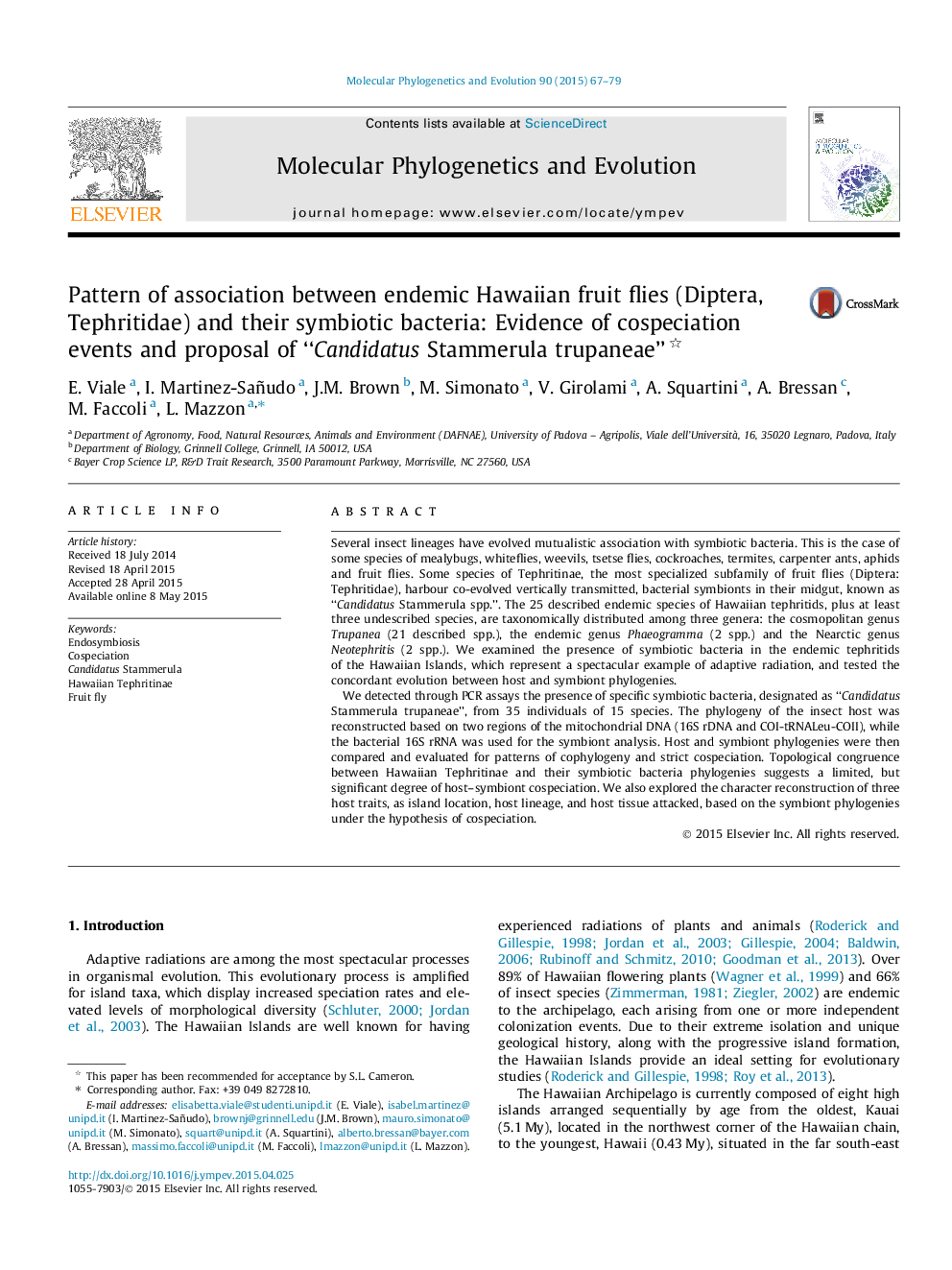| کد مقاله | کد نشریه | سال انتشار | مقاله انگلیسی | نسخه تمام متن |
|---|---|---|---|---|
| 2833763 | 1570806 | 2015 | 13 صفحه PDF | دانلود رایگان |

• We examined the presence of symbiosis in endemic Hawaiian tephritids.
• We inferred the phylogeny of both host and symbiont based on mitochondrial regions.
• The detected symbionts were included in “Candidatus Stammerula” monophyletic clade.
• A significant degree of host–symbiont cospeciation was detected.
Several insect lineages have evolved mutualistic association with symbiotic bacteria. This is the case of some species of mealybugs, whiteflies, weevils, tsetse flies, cockroaches, termites, carpenter ants, aphids and fruit flies. Some species of Tephritinae, the most specialized subfamily of fruit flies (Diptera: Tephritidae), harbour co-evolved vertically transmitted, bacterial symbionts in their midgut, known as “Candidatus Stammerula spp.”. The 25 described endemic species of Hawaiian tephritids, plus at least three undescribed species, are taxonomically distributed among three genera: the cosmopolitan genus Trupanea (21 described spp.), the endemic genus Phaeogramma (2 spp.) and the Nearctic genus Neotephritis (2 spp.). We examined the presence of symbiotic bacteria in the endemic tephritids of the Hawaiian Islands, which represent a spectacular example of adaptive radiation, and tested the concordant evolution between host and symbiont phylogenies.We detected through PCR assays the presence of specific symbiotic bacteria, designated as “Candidatus Stammerula trupaneae”, from 35 individuals of 15 species. The phylogeny of the insect host was reconstructed based on two regions of the mitochondrial DNA (16S rDNA and COI-tRNALeu-COII), while the bacterial 16S rRNA was used for the symbiont analysis. Host and symbiont phylogenies were then compared and evaluated for patterns of cophylogeny and strict cospeciation. Topological congruence between Hawaiian Tephritinae and their symbiotic bacteria phylogenies suggests a limited, but significant degree of host–symbiont cospeciation. We also explored the character reconstruction of three host traits, as island location, host lineage, and host tissue attacked, based on the symbiont phylogenies under the hypothesis of cospeciation.
Figure optionsDownload as PowerPoint slide
Journal: Molecular Phylogenetics and Evolution - Volume 90, September 2015, Pages 67–79